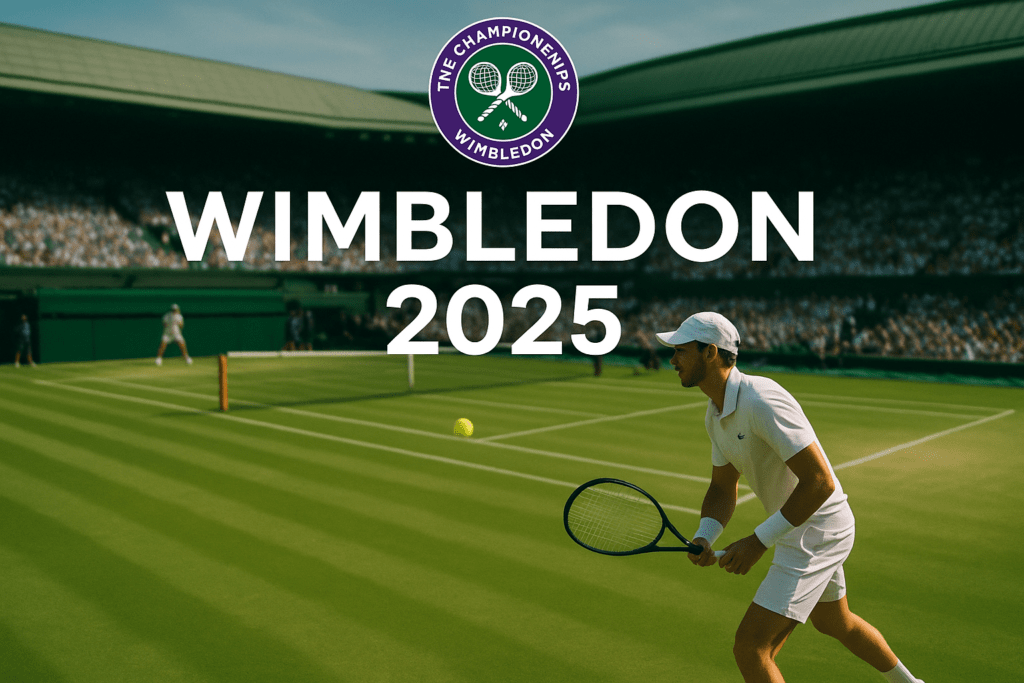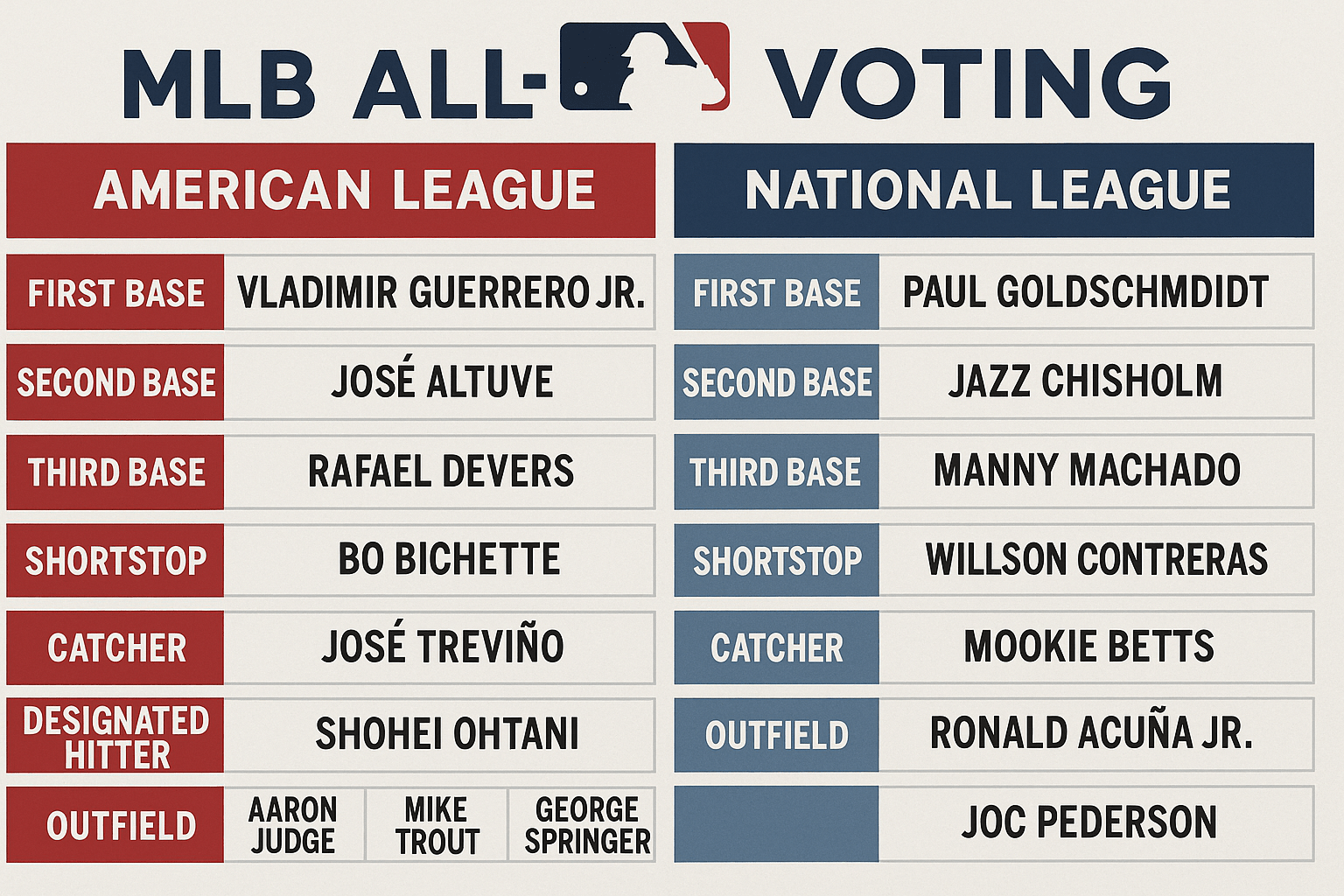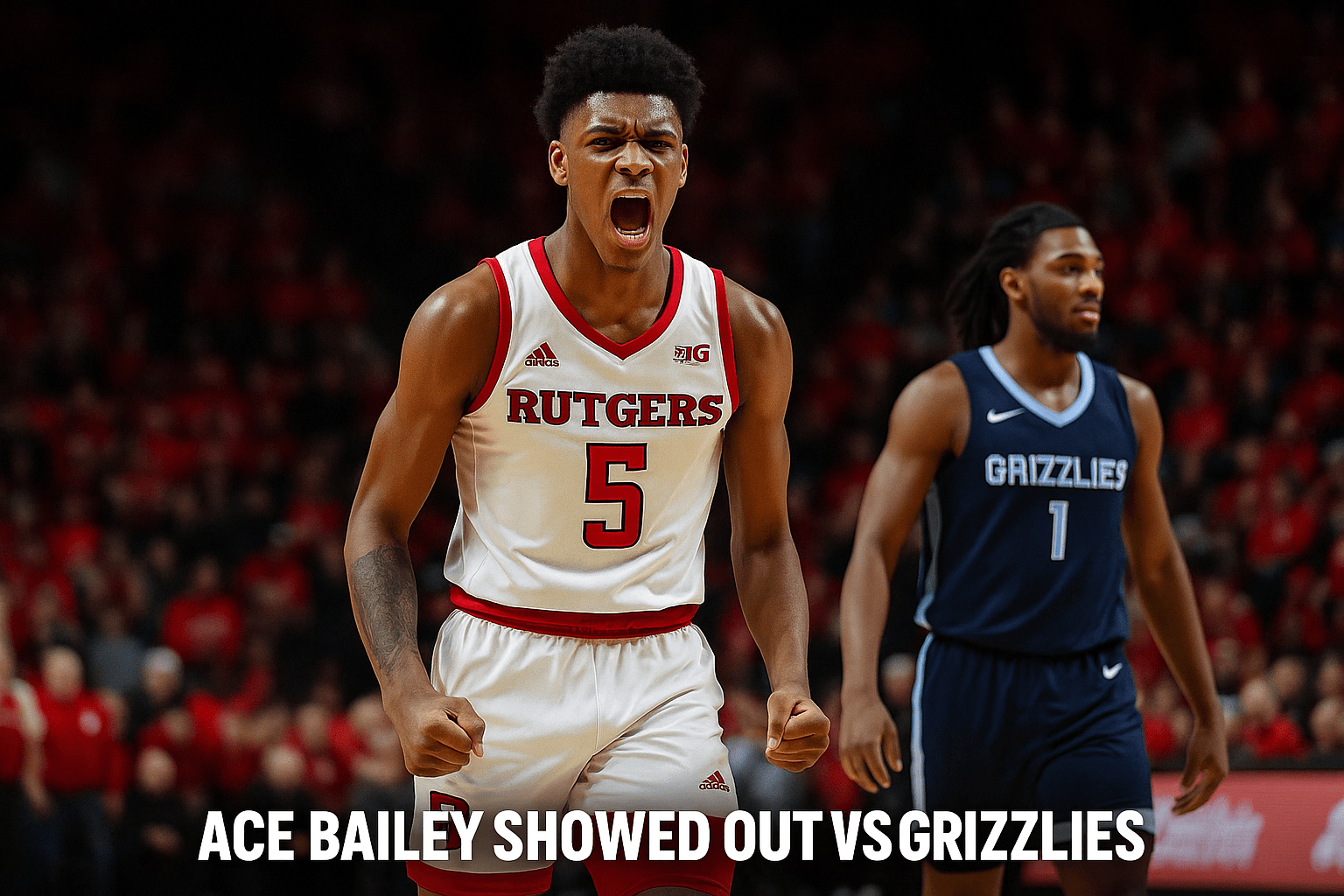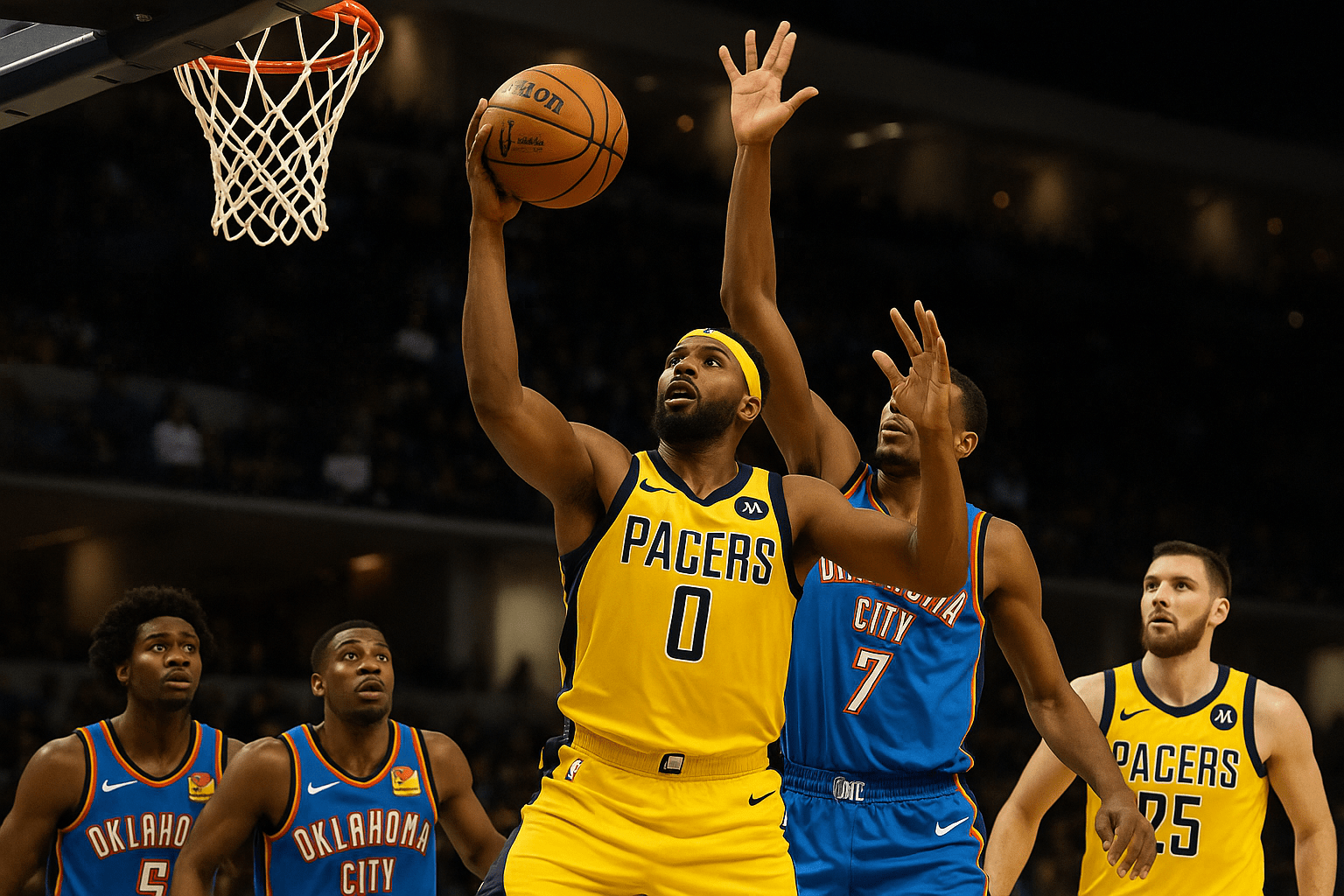There’s something about Wimbledon that resists the pace of the modern world. Maybe it’s the green grass courts that still demand white attire. Maybe it’s the silence before a serve on Centre Court, broken only by the bounce of the ball and the breath of a thousand fans holding onto hope. But this year, Wimbledon 2025 felt different. More electric. More unpredictable. As if the air over SW19 carried not just tradition—but transformation.
From the very first rally to the final point, the tournament unraveled like a novel you couldn’t put down. Every match was a chapter, every vs showdown a test of wills. And beneath the scoreboard and the television broadcast, there were undercurrents of emotion, strategy, and legacy intertwining in ways that went far beyond stats.
Opening Days: Seeds Fall, Unknowns Rise
The opening week of Wimbledon often sets the rhythm. But this time, the rhythm broke from the start.
Rain washed over Day 2, delaying play and creating a muddy kind of suspense. But it wasn’t the weather that soaked the headlines—it was the unexpected early exits. Holger Rune, a favorite among younger fans, was knocked out in a brutal five-set thriller against 19-year-old British wildcard Jayden Fox. No one expected Fox to hang in there for nearly four hours, let alone convert a match point with a spinning backhand lob that clipped the baseline. The match stats painted a picture of chaos: 67 unforced errors from Rune, 21 aces from Fox, and a crowd that turned from polite to roaring by the end.
On the women’s side, Aryna Sabalenka’s loss to Ukrainian teen Alyona Plishkova stunned the tournament. It wasn’t just a loss—it was domination. The 17-year-old dictated the points, held her nerve, and walked off the court as if this had always been her plan. No celebration. Just purpose.
The early days reminded us: Wimbledon 2025 wasn’t going to follow any script.
Gauff vs Swiatek: The Rivalry Grows Teeth
By the time the quarterfinals rolled around, fans were already whispering about the inevitable: Gauff vs Swiatek. A rematch. A reckoning. A collision that felt personal even though the two young women respect each other deeply. They’ve danced around each other in major tournaments for years—sometimes Gauff soaring, sometimes Świątek dominating—but this one had a different edge.
Coco Gauff came into Wimbledon in peak form, her serve averaging 117 mph, her footwork sharper than ever. Swiatek, known more for her clay dominance, came to the grass this time with new intent. Less spin. More pace. No apologies.
The match lasted two hours and 48 minutes and might be remembered as the best women’s quarterfinal Wimbledon has seen in a decade. Gauff took the first set in a tiebreak. Swiatek clawed back with a 6-2 second set, using her forehand like a scalpel. The third was a war of attrition. And in the final game, down 30-40, Gauff sent down an ace that painted the T line so perfectly it looked drawn on.
Her win wasn’t just a step into the semifinals. It was a declaration.
Sinner’s Calm, Alcaraz’s Fire
On the men’s side, it was Jannik Sinner vs Carlos Alcaraz that brought the house down. You could feel it before the players even warmed up—the buzz around Centre Court, the fans speaking in hushed tones as if bracing for something monumental. Their matches in the past had always been spectacular, but this one had the weight of destiny behind it.
Alcaraz played with urgency, bouncing on his toes like a boxer, mixing power with audacity. Sinner, the iceman from Italy, brought quiet precision and internal fire. They exchanged sets like punches, each rally building toward something greater.
Then came the fifth set. It wasn’t about physical endurance anymore. It was about nerve. Sinner saved two break points with inside-out winners. Alcaraz slipped—literally—on a key approach. In the end, Sinner’s ability to hold serve under crushing pressure made the difference. The stats told you it was close—five sets, 38 winners apiece, just a few more forced errors from Alcaraz—but numbers couldn’t capture the energy in that stadium when Sinner raised his arms in exhausted triumph.
A Final for the Ages: Medvedev vs Sinner
After a whirlwind of drama, the men’s final arrived: Medvedev vs Sinner. A contrast in styles. Medvedev brought cerebral control, using his depth and angles to bend the game to his will. Sinner countered with purity—clean strikes, unrelenting focus, a return game that seemed to read Medvedev’s mind.
The final went four sets, but it wasn’t about length—it was about rhythm. Every point was its own chess match. Sinner’s ability to take the ball early, even on grass, disrupted Medvedev’s timing. Medvedev’s returns forced Sinner to move more than he ever had in the tournament.
In the end, Sinner emerged as champion, not because he was flashier, but because he adapted faster. His match stats showed just two unforced errors in the final set and a first serve percentage that climbed with every game. It was as if the pressure cleared his vision instead of clouding it.
And when he knelt on the grass, head in hands, it was clear: Wimbledon 2025 had a new king.
Ons Jabeur: Finally, the Crown
No story hit quite as deeply as Ons Jabeur’s run to the title. Twice before she had stood on the Wimbledon final stage and walked away empty-handed. Twice before she had felt the weight of expectation and heartbreak. But not this year.
She played with freedom, with joy. Her semifinal vs Maria Sakkari was clinical—her dropshots landing with surgical precision, her volleys kissing the lines. And in the final, against Coco Gauff, she unleashed every part of her game.
The crowd wanted it. She wanted it more.
The match was tight—7-5, 4-6, 6-4—but Jabeur never blinked. Her stats were efficient: 19 winners, only 8 unforced errors, 78% first serve points won. But numbers don’t capture the tears she cried afterward. Or the way she looked up to the sky and whispered something no one else could hear.
It was her moment. It had always been coming. And Wimbledon was the place that finally gave it to her.
The Wildcards and Wonders
Behind every champion, there were stories not etched into trophies but into memories.
Lucie Havlíčková, the unseeded Czech teen, who took out two top-10 players in straight sets. Her match vs Jessica Pegula, where she came back from 2-5 down in the third, had people whispering comparisons to past legends.
Or Ethan Rogers, the American teenager with a cannon serve and zero fear, who made it all the way to the fourth round and left Centre Court with a standing ovation despite defeat. His stats didn’t shine—he had twice as many unforced errors as winners—but what mattered was his heart.
The Stats that Told the Story
- Longest rally: 46 shots – Swiatek vs Gauff
- Fastest serve: 142 mph – Shelton
- Most aces in a single match: Kyrgios – 38
- Most break points saved in a match: Medvedev – 12 out of 14
- Youngest player to reach Round 4: Ethan Rogers, 18 years, 2 months
But Wimbledon 2025 wasn’t about just stats. It was about resilience. Passion. Reinvention. It was about the kid who had no business reaching the quarterfinals and did anyway. The veteran who found new life at 30. The fans who stayed through rain delays just to catch a glimpse of magic on Court 18.
Closing Notes on a Classic Summer
When the last ball was struck and the last cheer died out, something lingered in the London air. A sense that this year had meant more. Not just for the winners, but for the game itself.
Wimbledon 2025 was unpredictable, fierce, poetic. It tested limits and crowned champions, yes. But more than that, it gave us stories to carry, to tell again and again. Underneath the numbers, beyond the results, it gave us reasons to believe in the beauty of sport again.
And for those who walked the grass, who gave everything for every point, they’ll remember this summer not just as a tournament.




